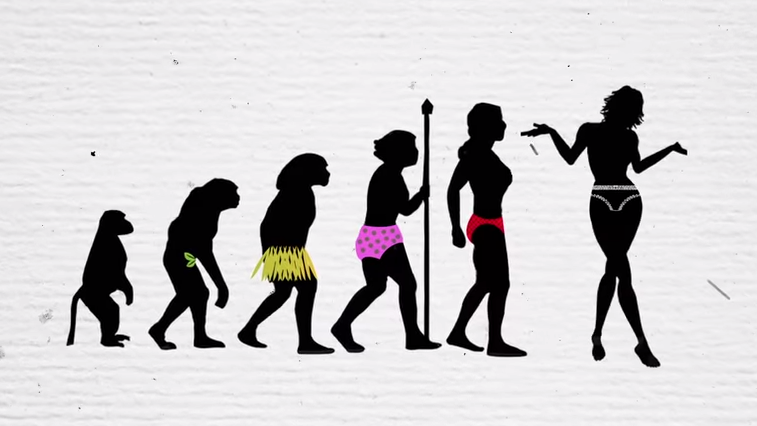Why do you put up with things that an entrepreneur wouldn’t? For Miki Agrawal, her entrepreneurial empire started with one question: “What sucks in my world?” Since then, Agrawal has made a habit of disrupting industries—especially in the taboo space. Her farm-to-table gluten-free pizza concept Wild is in its 13th year, her period-proof underwear Thinx shook up the $15 billion feminine-hygiene market (and famously rocked the advertising world), and her latest company Tushy is bringing bidets back. Here, Agrawal explains the three-question test that helps her decide what ideas she wants to pursue, and she makes a case for social entrepreneurship over a pure profit model: she knows from experience that your motivations really matter when times get tough. Miki Agrawal’s latest venture is revolutionizing the American toilet with Tushy.
Miki Agrawal: So, when I think about what ideas that I want to pursue, I think about three questions. The first question that I ask myself is, “What sucks in my world?" Does this thing suck in my world so much that I want to do something about it?
Like, for example, having period accidents every month. Having to literally like—when I was going to the bathroom, prior to bringing Tushy into the world, I would have to go to the bathroom, take—the average American uses 57 sheets of toilet paper per day; I was that person using probably more—I would take two wads of toilet paper, put them under the sink, so I would have two wet wads of toilet paper—because I wouldn't buy wet wipes, because they're are bad for the plumbing system and bad for the environment—so I’d get two wads of wet paper, then I would go to the bathroom and then I would take the first wet wad and I would like wipe. And then I would take dry paper and I would wipe. Then I’d take the second wet wad and I would wipe. Then I would get more dry paper and wipe, and I would do this whole thing to just make sure I’m clean down there. So what sucked in my world? Going through that process. What sucked in my world? Having stomach aches every time I ate pizza—regular, conventional pizza. You know, bleached flour, processed cheese, sugar-filled sauces, processed toppings. That was hurting me, but I loved pizza and I wanted to keep it in my life, but I couldn’t eat that kind of pizza. And so that sucked in my world.
The second question is, “Does it suck for a lot of people?” Because if it sucks for just you and you’re like a diva, then sorry, but that’s probably not a great business idea. But if it sucks for a lot of people, then: business opportunity.
One in five Americans eat gluten-free whether they’re gluten intolerant or not. Gluten does require a lot of energy for your body to break down. It’s not really great for your body to digest. And so to be able to eat gluten-free actually does keep you lighter. And so 20 percent of Americans eat gluten-free. That’s a pretty big market. Okay, we can start this business in this category.
In the bidet world or in the bathroom world wiping your butt with dry paper kind of sucks for a lot of people, specifically the 30 million combined cases of chronic UTIs, hemorrhoids, yeast infections, those who suffer from those, and just everyone that has to sit on fecal matter all day long, which is pretty much everyone. And so it sucks for everyone.
And the final question, which is the most important one, is: “Can I be passionate about this issue, cause or community for a really long time?” It takes ten years to be an overnight success. We often think like, “Oh my god, Dollar Shave Club sold in two years for a billion dollars. Oh, look at Instagram. It had ten people and sold for a billion dollars. I can do this.” Those are literally like winning the lottery. You have to feel like you can sit in that discomfort for ten years.
Can you sit in that, “Oh god, am I going to succeed or not? Am I going to like, just hand to mouth, figuring it out how to live during that period?” Can you do it for ten years? Can you be passionate about that issue for ten years?
So, for me, all of my businesses have a cause attached to it. For Tushy every bidet sold we’re helping fund clean latrine projects all over India. To date, we’ve helped over 12,000 families gain access to clean sanitation through our partnership with Samagra which is an organization that builds clean latrines all over India. Right now the global sanitation crisis is—over a billion people practice open defecation. The global sanitation crisis is one of the greatest killers of our time. I’m half Indian. My father came to this country with five dollars in his pocket from India, and that could have been my life. He came here, he meet my Japanese mother, they fell in love and in one generation built the American Dream for us. But for so many people they just don’t have that.
And so for me, what keeps me going is that not only am I changing culture in the first world by introducing a product that helps save the environment, helps save your health and hygiene, but also we’re helping fight the global sanitation crisis, which is helping—truly—people just gain basic access for human dignity. And so that really keeps me excited, and I think having that passion, that purpose and that thing, that you can be like, when you close your eyes and ask like, “Can I sit in this for ten years?” My answer is yes across the board. So I think if that is your answer too, then go for it.
So why I chose to be a social entrepreneur instead of a traditional entrepreneur—I mean, I think, first of all, the future of entrepreneurship is social entrepreneurship. I don’t think you can start a business without it being a social—that has a cause attached to it, because if there are two products that are the same and one has a cause and one doesn’t, who will you support? Obviously, the one that has a cause attached to it.
And secondly, as an entrepreneur when you are like crawling up a hill in molasses trying to just make it and keep your head above like the death zone, which, by the way, between 60 and 95 percent of businesses close within their first or second year, it’s a really daunting thing to start and grow.
What keeps us motivated, that when you close your eyes you can say, for every product sold I’m helping support someone who really desperately need something like this, or desperately needs to have a solve for what their issue is, like the global sanitation crisis.
And so, for me, I think for any entrepreneur, social enterprise actually drives you further and keeps you going for ten years, instead of just kind of like try to create a tee-shirt company so you can sell as many as you can and then sell it to hopefully Target and make your millions which, you know, you can’t start a business like that, because first of all, it’s inauthentic. People will see right through it. People who start businesses for the exit, most of them will fail because there’s just no true passion behind it.
To really, really succeed you have to have such deep passion and drive to make it succeed. When you’re going thorough the worst of times and you close your eyes, you really have to remember like “Oh my god, I’ve helped so many people just gain access to sanitation.” That's going to keep me going. Most people can’t say that if they’re just trying to sell a tee-shirt company.





